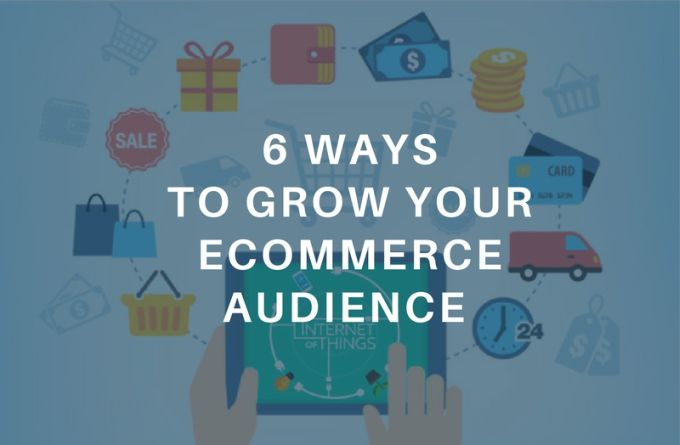As the number of businesses setting up an online store continues to increase, market research company Forrester estimates that 17% of all retail sales will be generated through eCommerce by 2022. Shoppers are increasingly making online transactions, and services like Shopify, Wix, and others make it possible to set up a store quickly and easily. If you haven’t gotten your business online yet, chances are you’re thinking about it.
Putting your inventory online isn’t enough to make your online business successful, however. In addition to making your products attractive, your website needs to be appealing, secure, and easy to navigate.

Having a high-quality website that gives visitors a pleasant online shopping experience is paramount to making sales through eCommerce — it’s similar to setting up a brick-and-mortar store environment that makes people want to keep shopping. Take a look at these six tips for converting visitors into buyers and optimizing your online store for the best return on investment.
1. Make Sure You Have a Solid eCommerce Foundation
The first step in setting up an online store is investing in an eCommerce platform that will make it easy for customers to find and purchase your products. Shopify is one of the most recognized names in the industry, but there are many other eCommerce platforms that offer comparable services. Consider these qualities when investigating what software you want to trust with your online business:
- Reliable Web Hosting: Depending on which platform you choose, eCommerce stores come in fully hosted and self-hosted packages. Fully hosted means the company will take care of all technical aspects of your site for you but is usually more expensive; self-hosted plans give you total control but require more patience and a willingness to learn how to manage a hosting account.
- Customizable Design: There is more than one way to present your inventory in your online store. You may envision a simple, elegant design with large images and minimal text, or perhaps you want it to look more like a print catalog. Check out the design options in the platform, including free and paid themes, to see if it can accommodate your vision.
- Security: As an online merchant, it is your responsibility to be compliant with the PCI Data Security Standards to keep customer and transaction data secure. Top-notch security is a must. Look for platforms that offer SSL certificates — which allow a browser to securely process transactions — as well as additional security measures such as server monitoring, malware scans, and fraud protection.
- Support and Documentation: Especially if you are new to eCommerce, questions about how to do certain things on the platform with inevitably come up. You’ll want to make sure that there is clear and thorough documentation available, as well as customer support that can walk you through the more challenging aspects of online store management.
- Room for Growth: An online store might start out small, but like any business, the hope is that it will grow over time. It’s important to select a platform that gives you options to scale up or down as needed and to add new features and content without limitations.
Whether you choose to start from scratch with web hosting and an online eCommerce platform or opt for a fully hosted system, many attributes of successful stores remain the same. Be sure to do your research to see which path makes the most sense for your store and budget.
2. Choose a Strong Web Host That Emphasizes Speed and Reliability
The web host you choose can determine many things about your website that affect your customer’s experience, from the loading time of your pages to the security of transactions. Not all web hosting plans are made to support small businesses or eCommerce, so look for these qualities when shopping for a host:
- Speed: Faster websites gain and keep more customers — it’s as simple as that. A web host that is consistently fast is best for businesses and placement in search engine results. Look into plans that come with solid-state drives, which often boast speeds up to 20 times faster than traditional hard-disk drives.
- Reliability: For eCommerce sites, the less time the site is down due to server errors, the better. Find a web host that can guarantee an uptime of 99.9% or above to ensure that customers can always access your website and make purchases.
- Support: Ideally, a web host for a small business will offer 24/7 support through multiple channels to help you through a variety of challenges. Whenever there is an issue, make sure you can rely on your host to promptly answer your phone call, chat, or email — no matter the time.
- Storage: Even for a small- or medium-sized business, limiting the amount of storage (all the stuff that goes on your site, from text files to videos) can hold your business back. Significant and speedy storage devices will give you the capacity to build out your business without butting up against performance limitations.
- Affordability: When starting a brand new business, minimizing your costs is critical to building an income and reliable revenue. Entrepreneurs should be careful, however, to skip the bargain-basement options for a hosting package that offers more bang for their buck — don’t sacrifice features, performance, or security in the name of saving a few dollars a month.
The best eCommerce web hosting and site builders blend the best of both worlds by giving users high-performance hosting with user-friendly templates and drag-and-drop interfaces that make website building painless.
3. Find a User-Friendly Design That Maximizes Conversions
Visitors to an online business expect everything to be clear and straightforward, from where to find products to how to contact the store. Clearly labeled buttons, stand-out headlines, and intuitive navigation all contribute to a smooth shopping experience. Many eCommerce sites still miss this mark on this, but yours doesn’t have to be one of them.
There are many, many online stores and you can expect that people visiting your site will have already visited several others. That means they already have an idea of what a good online shopping experience is like. Experts in user experience design have identified these traits as some of the most important for users:
- Call-to-Action Buttons: Whether you want a customer to buy a product or sign up for your newsletter, the link or button should be clearly visible, usually at the top of the page. Use a color that stands out to draw their attention. Once clicked, the resulting checkout process or registration form should not overwhelm the user; instead, just give or ask for the basic information.
- Search Bar: Users shouldn’t have to look around for a search bar. The critically important functionality should be highly visible and able to quickly route shoppers to exactly the product or page they’re looking for. Ideally, find a solution that autocompletes user queries to further streamline their experience.
- Menu and Navigation: Make your navigation easy to understand with clear-cut headings. You’ll want to balance simplicity with effectiveness so you don’t overwhelm customers or leave them lost. Create categories and subcategories that make sense for customers, even if it differs from how you organize your products internally. Include breadcrumbs so users can remember the path they followed.
Focus on user experiences and functionality instead of getting bogged down thumbing through various online store templates. Of course, you’ll need to consider color schemes as they relate to your branding and the reaction various hues subconsciously elicit eventually, but we recommend taking care of the nuts and bolts first.
4. Write Clear and Engaging Content
An eCommerce store should be more than just a space to hawk your products: it’s an online space to have an ongoing conversation with your customer base about your brand. The content on your site — whether a blog or product descriptions or customer reviews — plays a big role in what buyers think about your business. Make a concerted effort to understand who your customers are and what motivates them to buy so you can tailor your content to their interests.
Content marketing is one of the most effective ways to engage customers and attract them to your business. While it’s important to continuously update your blog and social media, the rule of quality over quantity applies here. Don’t just post hundreds of words to fill space — ensure your advice, news, or entertainment is valuable to customers and supports both their goals and your bottom line. A blog is a great way to promote your business and get customer feedback (plus, it helps in search-engine rankings — more on that later).
When selecting an eCommerce platform, check that it has a reliable content management system that lets you update and add content easily. Having the tools to put up text, images, and even videos will empower you to keep people interested in what you’re offering.
5. Attract More Shoppers With Strong Keyword Research
The ability of your online store to be discovered on the web depends largely on how visible it is in search results. Nearly 40% of eCommerce traffic comes from search engines, making Google, Bing, Yahoo, and the like critically important to your business success.
The art of search engine optimization, or SEO, combines tactics for creating content that caters to how people would search for your products, services, and business online. An essential component of SEO is keyword research, which involves discovering the best words and phrases to describe your products and business. Coincidentally, those keywords would match what people most likely use a Google search to find you. These words and phrases can be used in any of the content on your website, from the descriptions of your products to your blog posts.
Good SEO keyword use involves making an initial list of words and phrases to drive your efforts. Free online tools, such as Google Analytics and MozBar, can help track your progress. Don’t be afraid to be specific in your research — long tail keywords, which contain at least three words, constitute the bulk of searches and are more likely to convert.
6. Explore Complementary Revenue Streams
Although the primary way you hope to make money is through the sale of your products, don’t discount other ways of cashing in on your website. It’s possible to generate other income to give your online business a jump-start in the beginning and to supplement your income once you’ve gotten it off the ground.
Next, to eCommerce, advertising is one of the most common ways to make money online. Placing advertisements for related products on your website will bring in some extra cash and may help your customers find products they like. In a similar vein, consider using your blog and content marketing prowess to accept sponsored guest posts — or grow your network by contributing articles to other stores.
Aside from direct sales, two of the best strategies to increase revenue from your store involve placing value-added content or subscription services on your site that give customers extra information related to the lifestyle or culture surrounding your products.
Consider offering premium content for a reasonable price in addition to the free content on your blog, whether through digital download or registrations. Another model worth exploring is to offer a subscription service that delivers your products to customers on a regular basis — either specific items they select or a selection of items that are curated for them.
Making money online has never been easier with all of the tools available today. It requires dedication and persistence, with constant work to draw traffic to your site and gain followers. By applying the six strategies detailed above, however, you can set yourself up for success.

